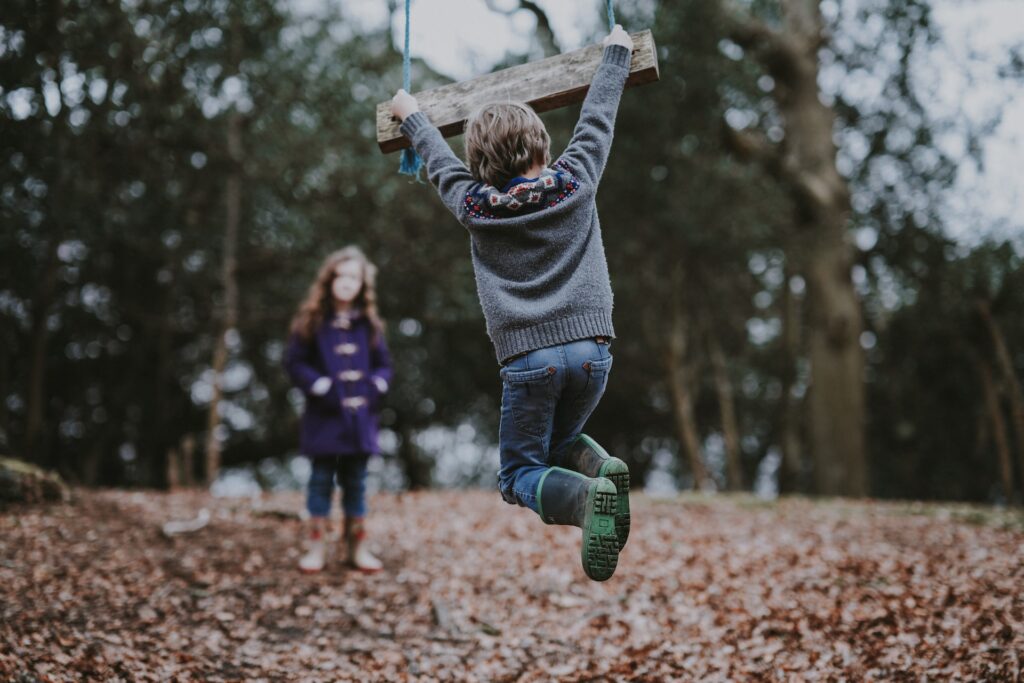Sara Tirrito’s article, Eva Kaili and the treatment of female prisoners with children. How it works in Europe: from the shortcomings of Belgium to the excellence of Germany, was published on “il Fatto Quotidiano” 15 February 2023. The full article (in Italian) can be found here.

Eva Kaili and the treatment of female prisoners with children. How it works in Europe: from the shortcomings of Belgium to the excellence of Germany
On Thursday 16 February, the house arrest hearing for the former Vice-President of the EU Parliament who was at the centre of the Qatar-Morocco bribe scandal. The Greek politician claims to have been able to see her daughter only a few times. Analysis of the Belgian situation and comparison with other countries.
There is no uniform solution in the European Union on the issues of prisons and children of persons being detained. This is demonstrated by the case of Eva Kaili, a former vice-president of the EU Parliament who ended up at the centre of the scandal of bribes from Qatar and Morocco, who reported having seen her two-year-old daughter only twice, in January.
According to Belgian law, Belgian authorities could have kept the child in prison from the start. Kaili, however, is asking for alternative measures to prison custody, which in Belgium means an electronic bracelet, which has so far been denied: on Thursday 16 February there will be a new hearing and the defence will again apply for house arrest. The problem is that the Belgian system lacks adequate facilities to protect both the judicial needs and the mother-child relationship. The situation is similar throughout Europe, with peaks of excellence in Germany, where there are open prisons equipped for children. At the opposite extreme is Greece: here there is only one institution for female prisoners with young children and it is a standard prison.
European conventions draw guidelines on imprisoned parents, but they are recommendations, not laws. And Italy is the only country to have a national charter on the subject.
How it works in Belgium – ‘A child enters prison when there is no alternative,’ Maurice Jansen, head of Relais enfants parents (Rep), a Belgian non-profit association that protects the prisoner- child bond, explains to ilfattoquotidiano.it. The family context is examined, the position of both parents, the age of the child, the presence of other siblings and the housing possibilities. If no other solution is feasible, the child ends up in prison. The one in Haren, where Kaili is detained, “is not designed to take in children,” says Jansen, “but it can.”
Whoever decides to keep his child outside, however, must comply with the regulations on interviews. The federal regulation in Wallonia stipulates five per week for those in pre-trial detention, three for convicts. In addition, in 11 prisons in Belgium, including Haren, the Rep network organises at least two visits per month in ad hoc spaces for children. These talks, however, have a long bureaucratic process. ‘Often,’ says Jansen, ‘it takes some time before a remand prisoner applies. He usually hopes to get out soon and does not want the children to visit him in prison”. Day-to-day difficulties, such as the strikes that affected the prison system from
October to January, also hinder the procedures. “They were organised on Wednesdays,” says Jansen, “days of parent-child meetings, and this caused delays in the paperwork.
Among the delayed applications could be that of Kaili, who complains that she saw her daughter almost a month after entering prison. A long period, also contested by associations such as Children of prisoners of Europe (Cope), which monitors the rights of children of prisoners in the EU.
“The Council of Europe Recommendation has not been respected,” Cope denounced in a statement. It refers to a document also signed in 2018 by Belgium, whereby ‘Children should visit a detained parent within one week of entering prison and on a regular and frequent basis thereafter’ (Art. 17).
However, if there were suitable institutions for mothers with children in Belgium, judges could send Kaili out of prison without risk to the investigation. The only prison used to receiving children is in Lantin, about ten kilometres away Liège. But it is a women’s penitentiary with standard cells adapted for children.
How it works in Italy – According to law 62/2011, in Italy a parent with children from zero to six years old should never go to prison, except for ‘precautionary needs of exceptional relevance’. The measure envisaged would be the protected family home for serious crimes – the ‘Istituto a custodia attenuata per madri’ (Icam). For years, this rule was disregarded, assigning by default mothers with children up to three years old to the nursery sections of women’s prisons, regardless of the crime committed.
Since 2018, sensitivities have changed and today a reform is underway that almost completely excludes detention in prison. Preference is given to Icam, penitentiary facilities in all respects but with space and supervision designed to mitigate the impact of children with prison. In Italy there are five: in Turin, Milan, Venice, Lauro and Cagliari. Assignment to protected homes is rarer so far, also because there are two, in Milan and Rome, run by private individuals.
Excluding the guests of the protected facilities, who are not part of the penitentiary circuit, there are 17 minors accompanying detained mothers according to the latest ministerial data, updated to 31 January 2023. They all live in Icam, except one in the Rebibbia nursery section. More numerous are the minors who meet their detained parents from the outside, at least 100,000 per year. For them, since 2014 the Ministry of Justice has recognised the National Charter of the Rights of Children of Prisoner Parents, which is based on the UN Convention on the Rights of the Child (1989) and inspired the European Recommendations.
It is not legally binding, but observed almost like a law. Renewed periodically (the last time in December 2021), it was mainly the association Children without Bars, which together with Cope
took the text to the Council of Europe. “Every day thousands of children enter prison to maintain a structuring bond with their parents,” Lia Sacerdote, president of Bambini senza barre and promoter of the document, explains to ilfattoquotidiano.it. “Nobody thinks that when an adult is in prison there is a direct consequence on his or her family. With the Charter, their basic needs become rights’.
In the rest of the EU – According to the European Commission’s Recommendations on the Rights of Prisoners, approved on 8 December 2022, all EU countries should provide “a special infrastructure and take reasonable measures in favour of children to ensure their health and well- being” for the time they are in prison with their parents (Art. 66).
In reality, while it is true that everywhere in Europe children are allowed to be in prison with their mother until the age of three, there is a huge gap in the possibility for judges to choose mitigated or alternative measures.
Germany – This is perhaps the best equipped country, with nine facilities for receiving imprisoned mothers with children. The most important one is in Vechta, in Lower Saxony. Opened in 1997, it is part of the prison system and is divided into two parts: one responds to the logic of the execution of the definitive sentence and accommodates children up to three years of age, the other houses women on semi-release with children up to six years of age. The Vechta facility pays particular attention to supporting the mothers also once they are out so that they are accompanied in their job placement.
During imprisonment, mother-child units are supervised by a responsible educator, support is continuous and every six months social workers draw up a report on mother-child behaviour. Prison staff have specific requirements and are also trained to handle educational and domestic issues.
Spain – Women in alternative measures are mostly housed in the Nuevo Futuro facility. It is located in Madrid and can accommodate up to 55 mothers with 66 children in total. It is comparable to Italian protected houses: open regime, life similar to real life, with freedom for shopping, meals and outings. The inmates observe an internal regulation and the women arrive by order of a magistrate who sets any limits. The big difference from Italy is that the staff is composed of educators from the prison institute, and a social worker visits at least every 15 days. The women can also work or study, while the children are looked after by operators.
France – There are no external facilities to accommodate female prisoners who are mothers with children. There are 25 prisons authorised to receive mother-child units, with a total capacity of 66 places. These are nursery sections inside the prisons, equipped to be comfortable for the children but without substantial differences from ordinary prisons. The arrangements concern the basics:
hot water in the cells, separation of the mother’s and the child’s space, opening of the doors during the day, minimum width of 15 square metres.
Greece – It is among the most backward countries on the rights of women prisoners, including mothers. This is demonstrated by the number of women’s prisons: two in the whole country. Sheltered houses do not exist. According to Greek law, those who wish to take their children under three years of age with them are taken to Eleonas Prison in Thebes. This almost always implies removal from home, which makes it more difficult to maintain ties with family members, one of the principles on which the world prison system is based.
Around the world – Setting minimum standards for the treatment of imprisoned mothers around the world are the Bangkok Rules. Seventy rules approved in 2010 by the United Nations General Assembly and enshrined in a document that is the only international instrument on children in prison with their parents. According to this charter, institutions should provide specific services for female prisoners with accompanying children (rules 40-56) and always favour non-custodial measures except in the case of serious offences (rule 64). However, the seriousness of the offence is always assessed by the judges, who have to deal with the lack of suitable detention facilities for children.

